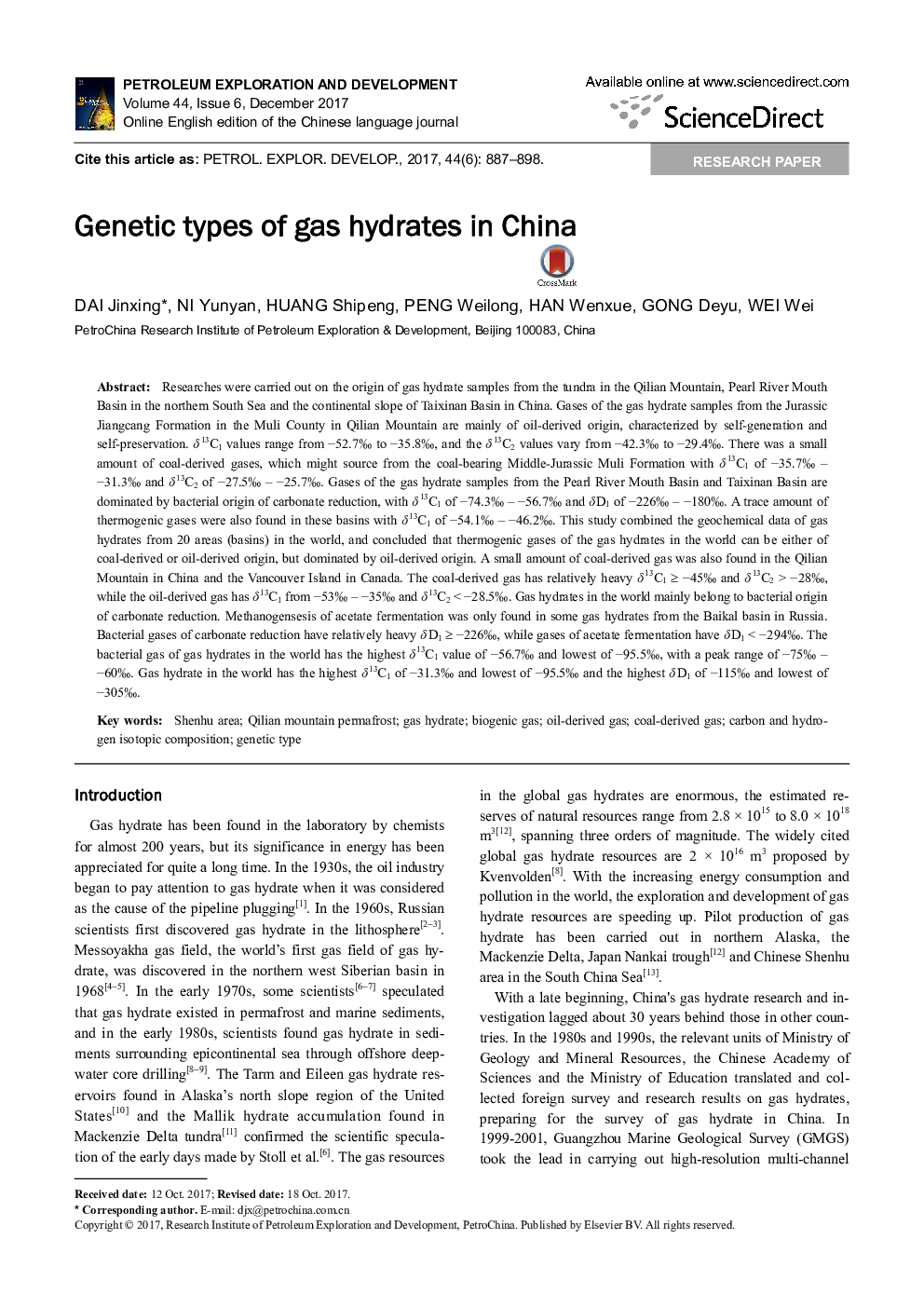| Article ID | Journal | Published Year | Pages | File Type |
|---|---|---|---|---|
| 8912193 | Petroleum Exploration and Development | 2017 | 12 Pages |
Abstract
Researches were carried out on the origin of gas hydrate samples from the tundra in the Qilian Mountain, Pearl River Mouth Basin in the northern South Sea and the continental slope of Taixinan Basin in China. Gases of the gas hydrate samples from the Jurassic Jiangcang Formation in the Muli County in Qilian Mountain are mainly of oil-derived origin, characterized by self-generation and self-preservation. δ13C1 values range from â52.7â° to â35.8â°, and the δ13C2 values vary from â42.3â° to â29.4â°. There was a small amount of coal-derived gases, which might source from the coal-bearing Middle-Jurassic Muli Formation with δ13C1 of â35.7â° - â31.3â° and δ13C2 of â27.5â° - â25.7â°. Gases of the gas hydrate samples from the Pearl River Mouth Basin and Taixinan Basin are dominated by bacterial origin of carbonate reduction, with δ13C1 of â74.3â° - â56.7â° and δD1 of â226â° - â180â°. A trace amount of thermogenic gases were also found in these basins with δ13C1 of â54.1â° - â46.2â°. This study combined the geochemical data of gas hydrates from 20 areas (basins) in the world, and concluded that thermogenic gases of the gas hydrates in the world can be either of coal-derived or oil-derived origin, but dominated by oil-derived origin. A small amount of coal-derived gas was also found in the Qilian Mountain in China and the Vancouver Island in Canada. The coal-derived gas has relatively heavy δ13C1 ⥠â45â° and δ13C2 > â28â°, while the oil-derived gas has δ13C1 from â53â° - â35â° and δ13C2 < â28.5â°. Gas hydrates in the world mainly belong to bacterial origin of carbonate reduction. Methanogensesis of acetate fermentation was only found in some gas hydrates from the Baikal basin in Russia. Bacterial gases of carbonate reduction have relatively heavy δD1 ⥠â226â°, while gases of acetate fermentation have δD1 < â294â°. The bacterial gas of gas hydrates in the world has the highest δ13C1 value of â56.7â° and lowest of â95.5â°, with a peak range of â75â° - â60â°. Gas hydrate in the world has the highest δ13C1 of â31.3â° and lowest of â95.5â° and the highest δD1 of â115â° and lowest of â305â°.
Related Topics
Physical Sciences and Engineering
Earth and Planetary Sciences
Geochemistry and Petrology
Authors
Jinxing DAI, Yunyan NI, Shipeng HUANG, Weilong PENG, Wenxue HAN, Deyu GONG, Wei WEI,
